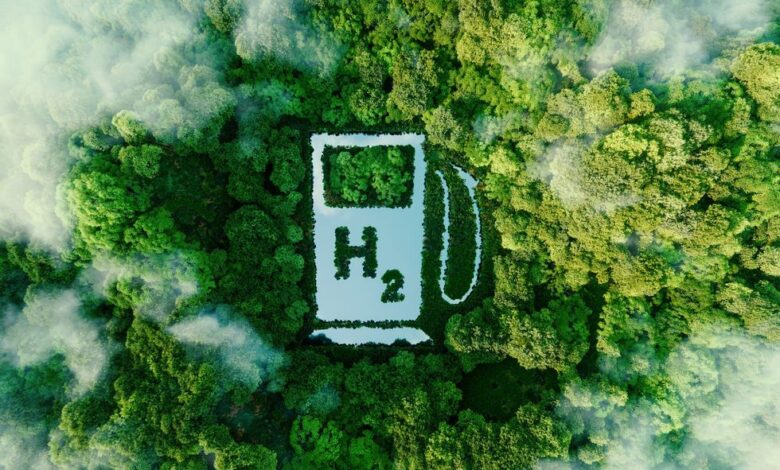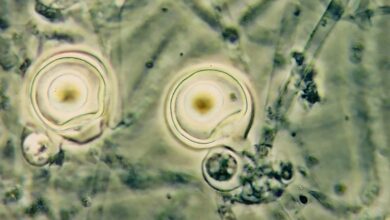Digital Twins Give Hydrogen a Greener Path to Growth

This article is part of our exclusive IEEE Journal Watch series in partnership with IEEE Xplore.
Hydrogen has great promise as a low-emission fuel source. It burns clean, generating only water as a by-product, and when it’s produced through electrolysis by splitting water into hydrogen and oxygen, the entire life cycle can be very environmentally friendly.
But the use of hydrogen has never reached its potential as a renewable fuel, mostly because its production process drives up the cost. Most hydrogen today is still produced as a by-product of fossil-fuel refinement—using methane with carbon monoxide as a by-product. Meanwhile, the hydrogen produced by electrolysis represents less than 1 percent of all the world’s hydrogen production. In order for hydrogen to be a viable source of clean energy, the cost of electrolysis needs to be much lower.
Sharaf Alsharif, a researcher at the Oldenburger OFFIS Institute for Information Technology in Oldenburg, Germany, believes digital twins could help bring down the cost of clean hydrogen production. Digital twins are computer-simulation programs that can track and adjust the operations of a physical device in great detail. The close monitoring of hydrogen electrolyzers that digital twins provide could help streamline the devices’ operation and bring down the cost of electrolysis as a result.
“Right now, we can’t think of all the use cases that make an electrolyzer efficient. But that’s the point—that you can…make it possible with this digital twin.”
—Sharaf Alsharif, Oldenburger OFFIS Institute for Information Technology, Oldenburg, Germany
One way digital twins could reduce the cost of electrolysis is by monitoring the state of health of electrolyzers. Digital twins can track the operations of electrolyzer components like electrodes, membranes, or pumps to see which parts may be likely to fail and to proactively make recommendations for scheduling maintenance. Alsharif says such prediction maintenance capabilities could save operators many hours of production time when electrolyzers would otherwise be taken offline to enable unscheduled troubleshooting.
To encourage the adoption of digital twins for electrolysis, Alsharif and his colleagues at OFFIS presented a software architecture—a kind of architectural blueprint for building software systems—for developing hydrogen electrolysis monitoring digital twins at the ETG Congress 2023 conference in Germany.
The researchers envisioned a future where hydrogen electrolysis operators would have dashboards that monitor the performance of electrolyzers running in the field. Digital twins would provide the dashboard data by remotely monitoring electrolyzers and issuing alerts when anomalous behavior is detected. And having a well-defined software architecture, Alsharif says, could help operators more easily build digital twins for their hydrogen electrolysis systems.
Digital twins can also help operators by having direct control over electrolyzers, Alsharif says. One useful application of direct control is adjusting electrolyzers’ energy consumption based on the power grid’s current energy mix. When more renewable sources of energy are part of the mix, digital twins can direct electrolyzers to ramp up production, therefore making the production of hydrogen more green overall. Production can also be decreased during usage peaks when the price of energy from the grid rises, which would lower the cost of hydrogen electrolysis production overall.
Researchers kept these use cases in mind while they created a digital twin software architecture suitable with any type of hydrogen electrolyzer, Alsharif says. The architecture had to handle requirements like bidirectional data connections with electrolyzers, live updates on the health of electrolyzer components, and maintenance-schedule recommendations.
They settled on a service-oriented architecture for building digital twins for hydrogen electrolysis. A service-oriented architecture consists of a central software program that accepts requests from other smaller programs and “orchestrates” requests between all the components. The design won over other architectural styles because of its flexibility. New capabilities can be added to the digital twin easily in the form of new services that simply plug into the central program.
“Right now, we can’t think of all the use cases that make an electrolyzer efficient,” Alsharif says. “But that’s the point—that you can actually apply any service and make it possible with this digital twin.”
Service-oriented architectures are also fast enough to support the live bidirectional data connection needed by electrolyzers. That’s unlike a microservice architecture, for example, which causes delays due to a higher volume of requests sent between services, Alsharif says. Operators who want to use digital twins to monitor electrolyzers can follow this architectural blueprint when building the software for their digital twins.
Future research, he says, might include using digital twins to help with the manufacturing process of electrolyzers. To truly scale up clean hydrogen production, the manufacturing of large electrolyzers, which is currently a semi-manual process, needs to scale up as well, Alsharif says.
“That’s where the digital twins technology comes into play—by supporting this whole process, not only the operation and maintenance of the electrolyzers, but also from the very beginning of the production or the manufacturing process,” he says.
IEEE Spectrum




